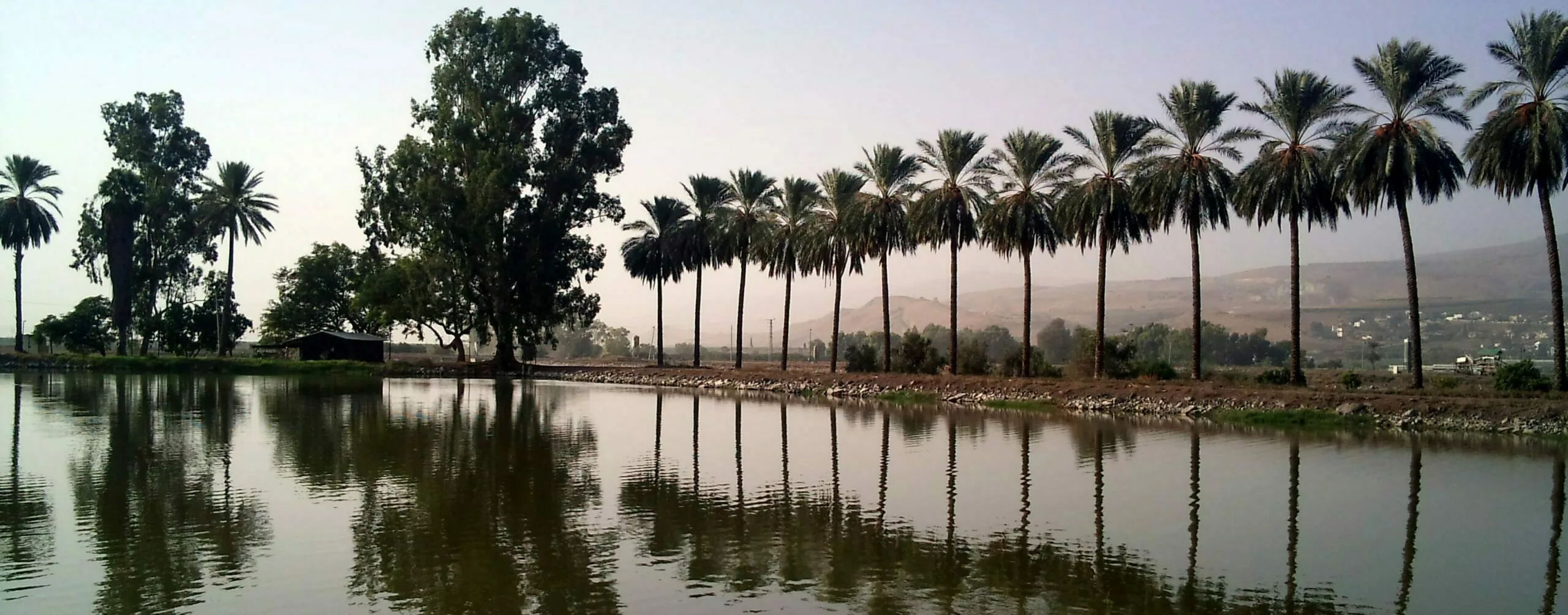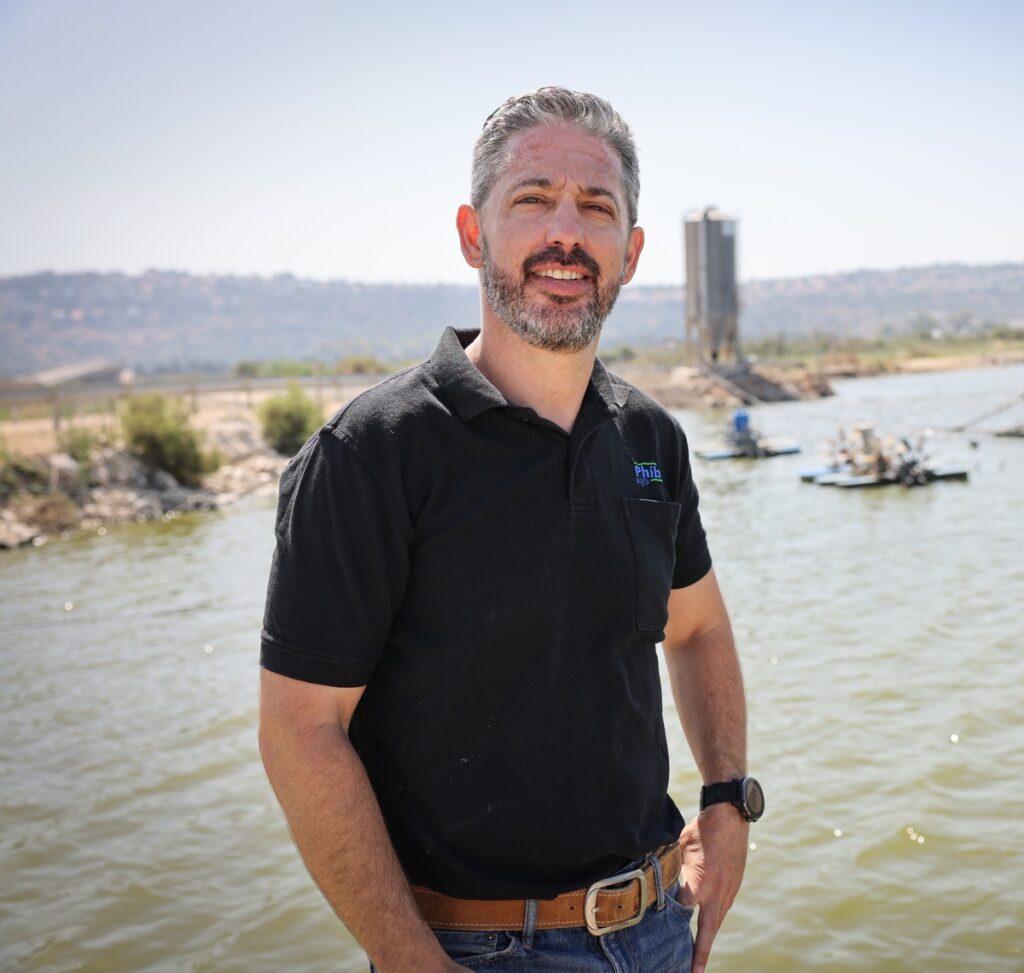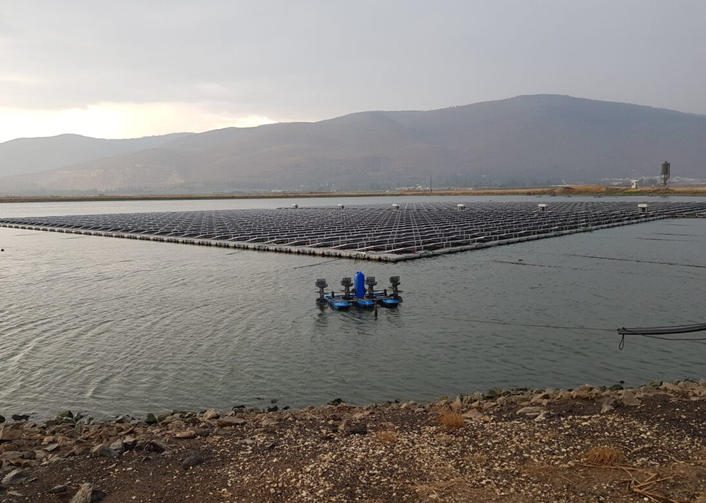As a veterinarian, I’ve spent my career working with pigs, cattle, chickens and the like. Throw a question at me about those species and I’ll likely have an answer. But when it comes to aquaculture? Well, let’s just say I’m a fish out of water.
But Senior Director of Phibro Aqua in Israel, Benny Shapira, schooled me on all things fish farming, including the industry’s global impact. Benny, who holds a bachelor’s degree in marine science, a master’s degree in animal science and a Master of Business Administration (MBA) degree, leads the Phibro Aqua team, whose focus is innovation and sustainable solutions for the aquaculture industry.
In Part 4 of “Let’s Dive In,” the final installment of my four-part series on aquaculture, I share what I learned from Benny about how sustainable innovation in fish farming is providing nutritious protein and economic opportunities to people around the world – while helping to protect our planet.
Is Fish Farming Sustainable?
Agriculture is under the microscope today when it comes to sustainability. It’s not just consumers, but food companies, lawmakers, investors and others who want to ensure farmers are growing crops and raising livestock responsibly – with an eye toward the stewardship of our natural resources and communities.
Fish farming, a sector of aquaculture where fish are raised for food in both water- and land-based farms, is no exception. As the industry grows (aquaculture is the world’s fastest growing food-production sector), interest in how fish are raised and the potential impacts on communities and the environment does, too.
So, is fish farming sustainable?
While sustainability is often seen through the lens of environment, I look at it through a much broader lens as defined by the United Nations (UN). In 2015, the UN adopted a blueprint to achieve a better and more sustainable future for all – with an aggressive timeline to reach milestones by 2030. At the core are 17 Sustainable Development Goals (SDGs), which are an urgent call for action by all countries – developed and developing – to address global challenges.
Responsible aquaculture aligns with several of the 17 SDGs, according to the National Oceanic and Atmospheric Administration, more commonly known as NOAA. Fish farming plays important roles in helping people and our planet thrive, including addressing the UN goals focused on alleviating food insecurity, creating economic opportunities and the responsible use of resources.
Addressing Food Insecurity
The world’s population is expected to increase by nearly 2 billion people in the next 30 years, from the current 8 billion to 9.7 billion in 2050. That’s a lot of mouths to feed.
Fish farming is helping to provide a nutritious and affordable source of protein to many, particularly in low-income countries that are becoming more affluent. As I mentioned in “Let’s Dive In Part 1 – Why Are Fish Farmed?” as incomes increase, consumers add more animal protein to their diets and fish is usually first. It’s the “gateway meat” to other sources of protein like poultry and red meat, as fish is typically more affordable.
According to UN Food and Agriculture Organization (FAO) report, “The State of World Fisheries and Aquaculture,” aquaculture has expanded fish availability to regions and countries that otherwise would have limited or no access to farmed species, leading to improved nutrition and food security.
“Aquaculture has already demonstrated its crucial role in global food security,” according to the report, which also encouraged further development of aquaculture in Africa and other regions “where population growth will challenge food systems most.”
Economic Opportunities
Fish farming creates year-round jobs in both developed and developing nations (mostly in remote areas), supporting waterfront and coastal communities. The industry makes a significant socioeconomic impact, lifting people out of poverty in areas of the world where economic opportunities tend to be limited.
Several international aid organizations understand the economic benefits of fish farming, having invested $3.5 million in February of 2023 to fund a tilapia farming project in Zimbabwe. The African country is among the poorest in the world. The goal of the project, implemented by the FAO, is to create opportunities for marginalized communities, increasing current production of tilapia from 5,600 to 14,000 tons over the next decade.
According to the country’s minister of Agriculture and Fisheries: “Tilapia farming can be a driver of our country’s inclusive growth. This agreement will help our tilapia aquaculture take off and can be instrumental to reduce poverty and improve food security.”
In 2020, an estimated 58.5 million people globally were employed in the primary fisheries and aquaculture sector, according to the FAO State of World Fisheries and Aquaculture 2022 report. Taking into account dependents, it’s estimate that 600 million people rely on fisheries and aquaculture for their livelihoods. Having jobs and a paycheck means having more access not only to nutritious food, but to education and healthcare.
In the U.S., aquaculture production is valued at $1.5 billion. But the economic impact goes beyond the farm. Fish farming drives employment in other industries like seafood processing, feed and equipment manufacturing, and research and development.
Responsible Resource Use
When it comes to the use of the earth’s natural resources, aquaculture as an industry is impressive. It has a relatively low carbon footprint and requires less land as many farms are in net containers in oceans, rivers and ponds. Also, fish are very efficient when it comes to converting feed into protein for our enjoyment.
Currently, fisheries and a relatively small aquaculture sector produce only 2% of the global food supply. With growing demand and oceans covering 70% of the earth’s surface, there’s plenty of reasons and room to expand the sustainable production of fish.
Fish farming also helps protect wild fish populations, contrary to popular belief. Overfishing is a real concern, and without fish farms, natural stocks would be under pressure to meet growing global demand.
It’s exciting to see innovations in fish farming that are helping the industry continuously improve sustainability.
One such technology is a mapping and planning tool that analyzes “ocean neighborhoods” – providing critical insights to make informed decisions that expand sustainable aquaculture opportunities while minimizing potential environmental impacts. It also provides detailed information about habitats and species, current industries in the area, and potential hazards to aquaculture (like undersea cables or shipwrecks).
Recirculating aquaculture systems (RAS) used in land-based fish farming use filters, pumps, aerators and indoors tanks to recycle most, if not all, of the water used in the facilities. Not only do RAS closed-loop systems help reduce environmental impacts, but they make it possible for fish farming to be undertaken almost anywhere, including in urban areas.
Solar panels installed in reservoirs where fish are grown produce electricity, while the water is used in the summer to irrigate crops.
Other innovations that have surfaced include drones, sensors and artificial intelligence that inspect the health of fish and water quality, including temperature, and pH, oxygen and saline levels. One sensor even monitors the hunger level of fish, helping farmers more precisely deliver feed.
I’m confident farmers and researchers in this space will continue to make waves. The progress is truly fascinating, and I feel fortunate to have had the opportunity to visit with Benny to take a deeper dive into technology and so much more.
This livestock veterinarian and rural Ohio farmer now has a much better understanding of fish farming basics, how farmers provide for the health and wellbeing of the fish in their care and the industry’s critical role as a sustainable solution to pressing issues like food insecurity and economic instability.
If you haven’t had the opportunity to read Parts 1, 2 and 3 of “Let’s Dive In,” I encourage you to do so (links below). And as always, I’m available to connect and answer your questions. Reach out at @AskDrDorman or AskDrDorman@pahc.com.
Let’s Dive In: Part 1 – Why are Fish Farmed? | Explore Animal Health
Let’s Dive In: Part 2 – How Are Fish Farmed? | Explore Animal Health
Let’s Dive In: Part 3 – Are Fish Raised on Farms Healthy? | Explore Animal Health
Additional Resources:
https://www.globalseafood.org/
https://globalsalmoninitiative.org/en/
https://www.globalgap.org/what-we-offer/solutions/ifa-aquaculture/


